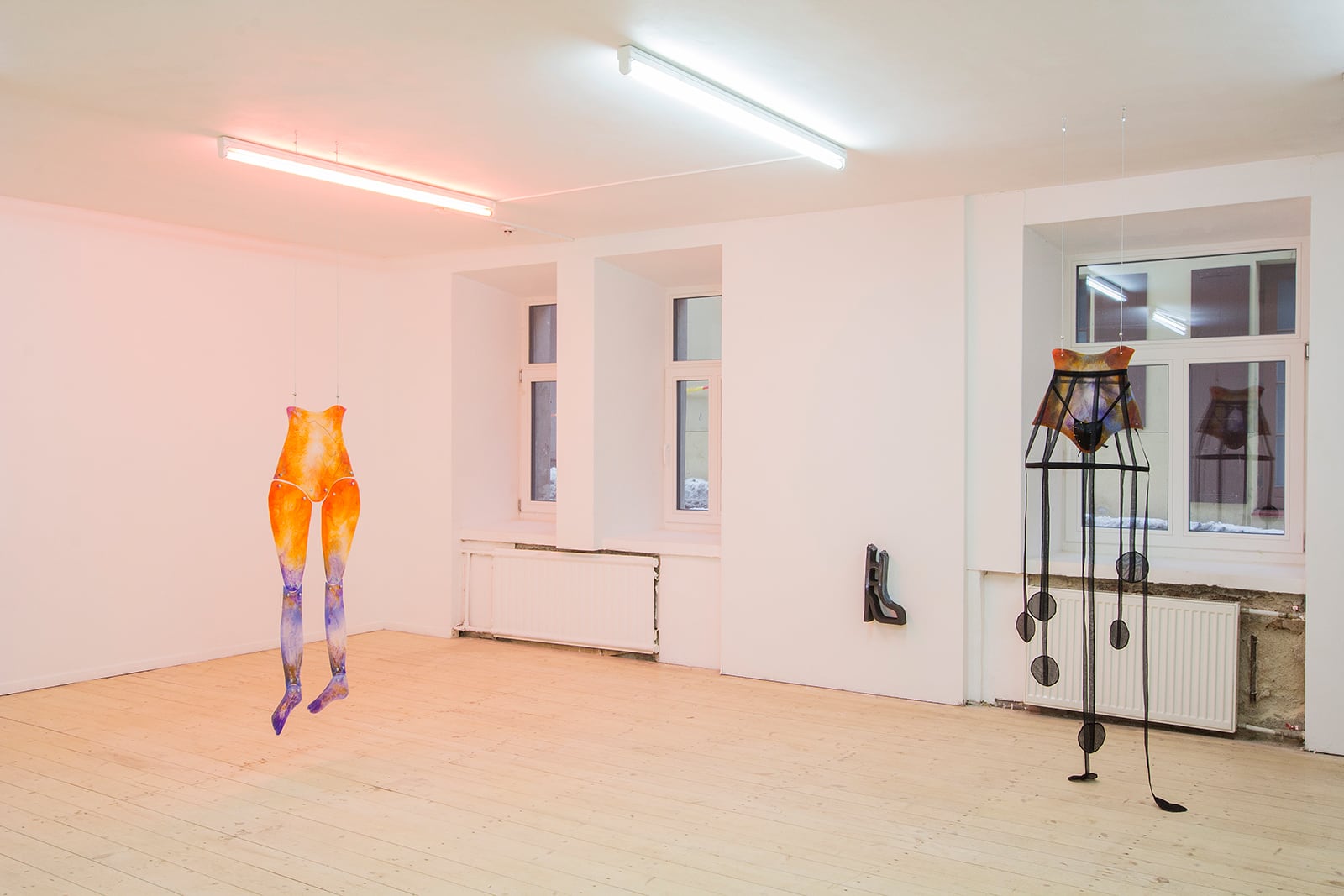 Exhibition view
Exhibition view
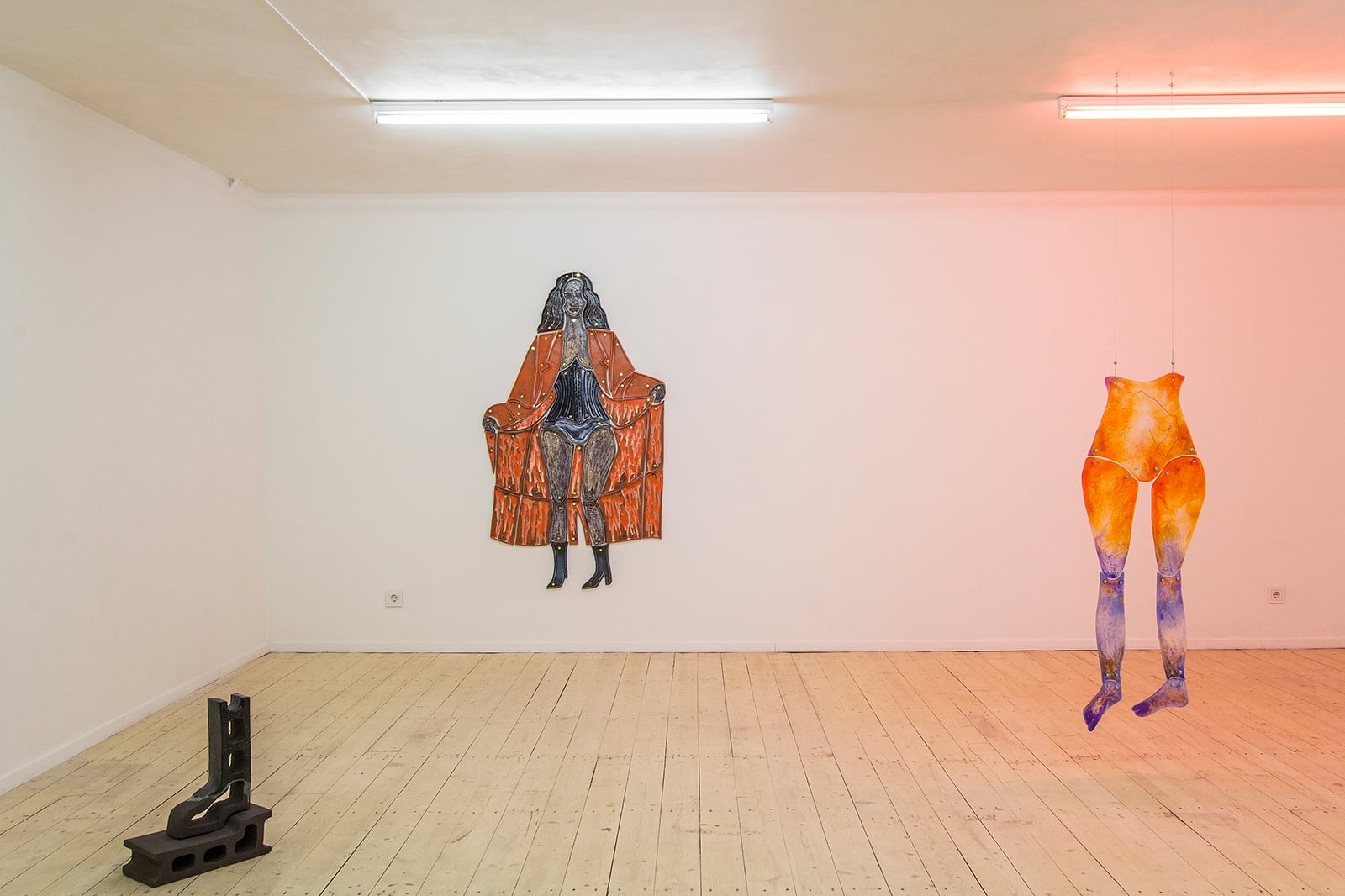 Exhibition view
Exhibition view
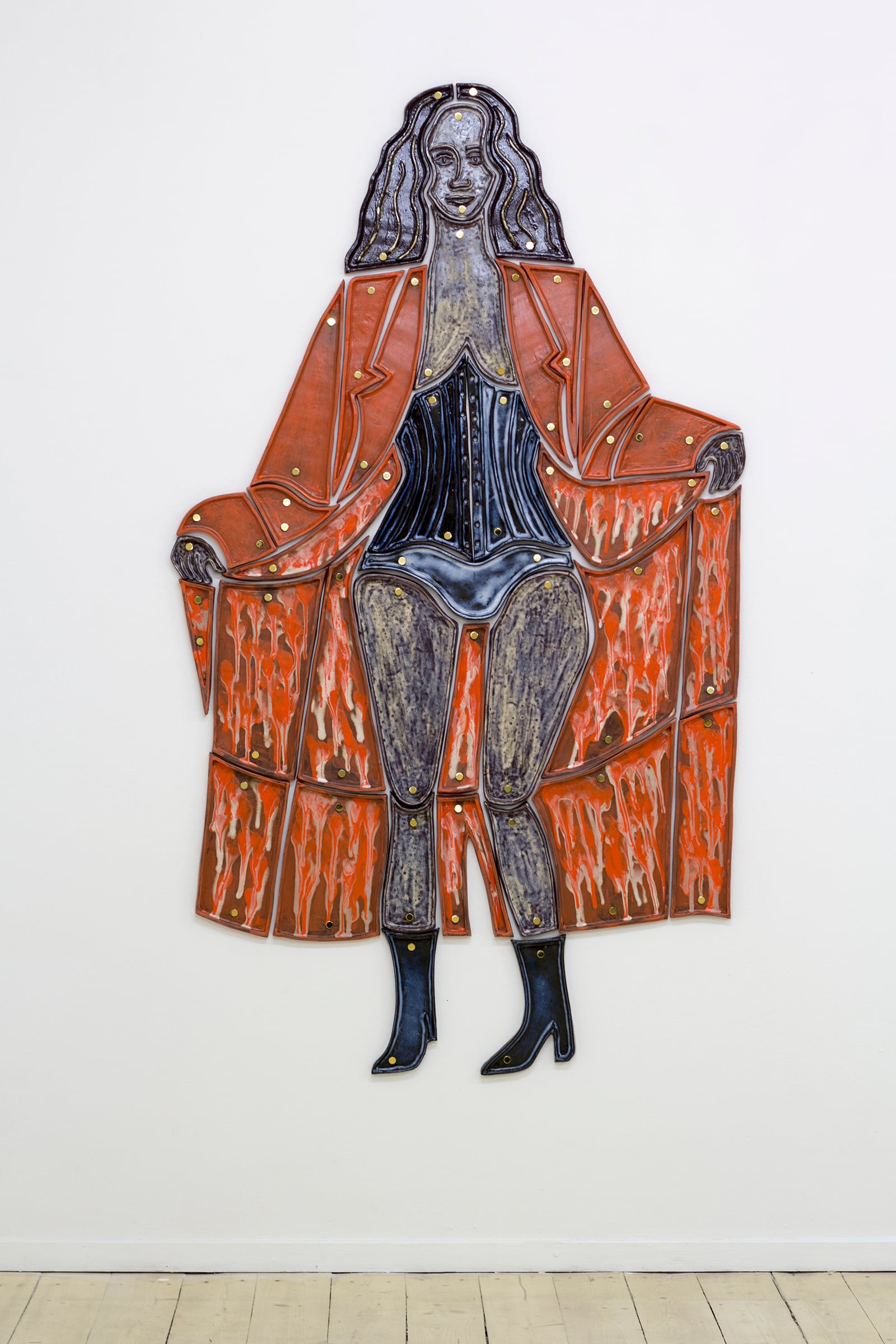 Paloma Proudfoot Project for an Overcoat. Glazed black stoneware, mirror screws, 2020
Paloma Proudfoot Project for an Overcoat. Glazed black stoneware, mirror screws, 2020
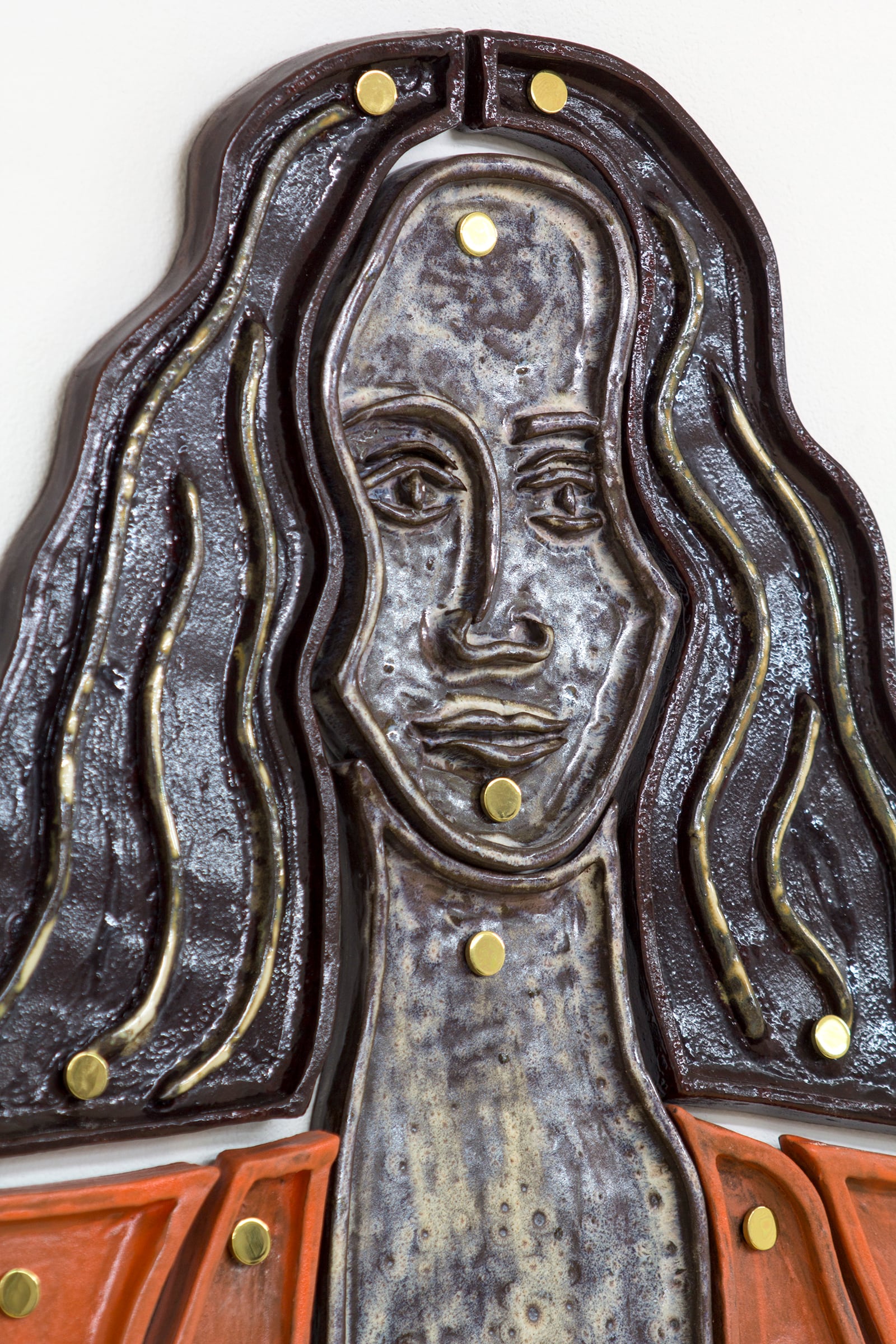 Paloma Proudfoot Project for an Overcoat. Glazed black stoneware, mirror screws, 2020
Paloma Proudfoot Project for an Overcoat. Glazed black stoneware, mirror screws, 2020
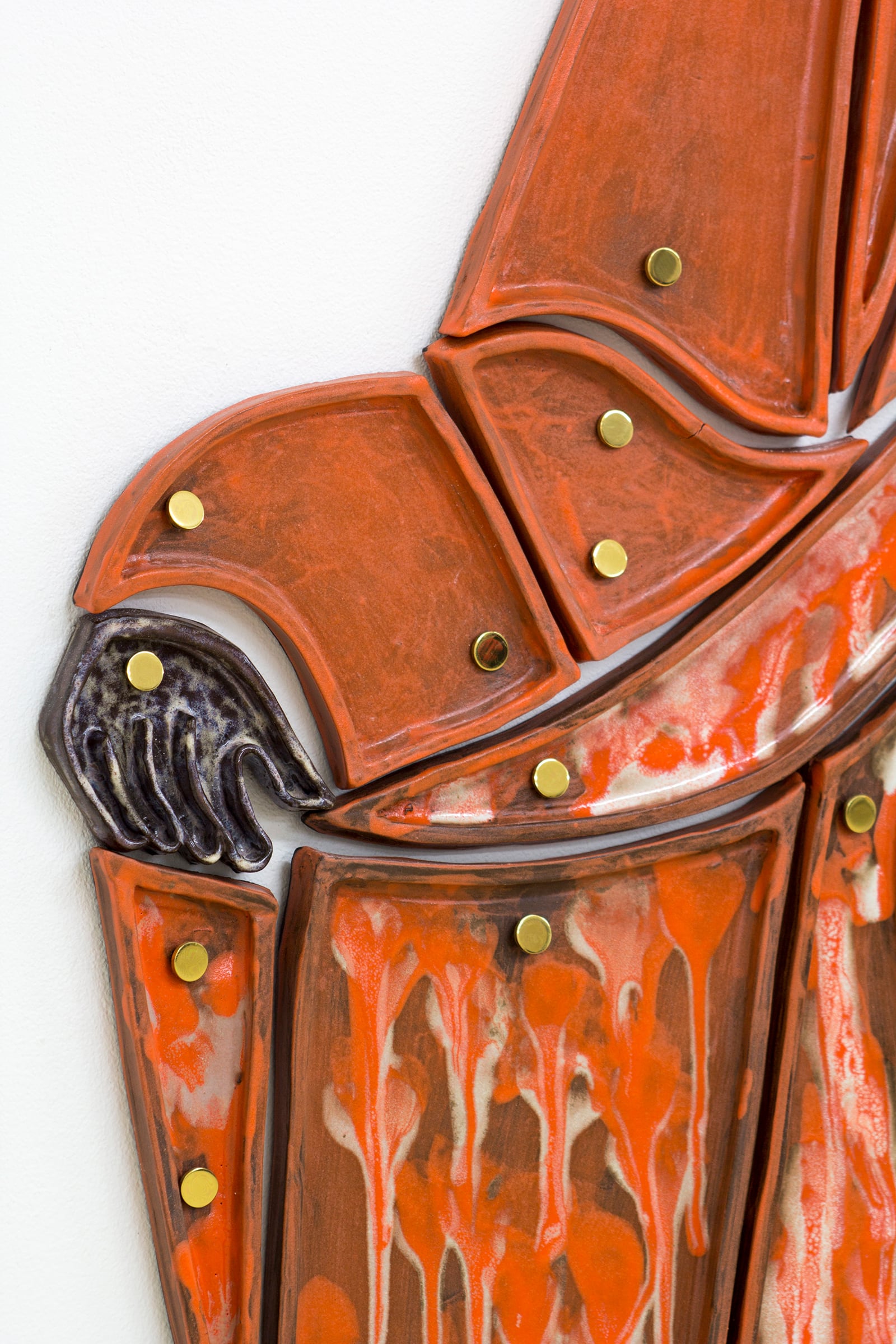 Paloma Proudfoot Project for an Overcoat. Glazed black stoneware, mirror screws, 2020
Paloma Proudfoot Project for an Overcoat. Glazed black stoneware, mirror screws, 2020
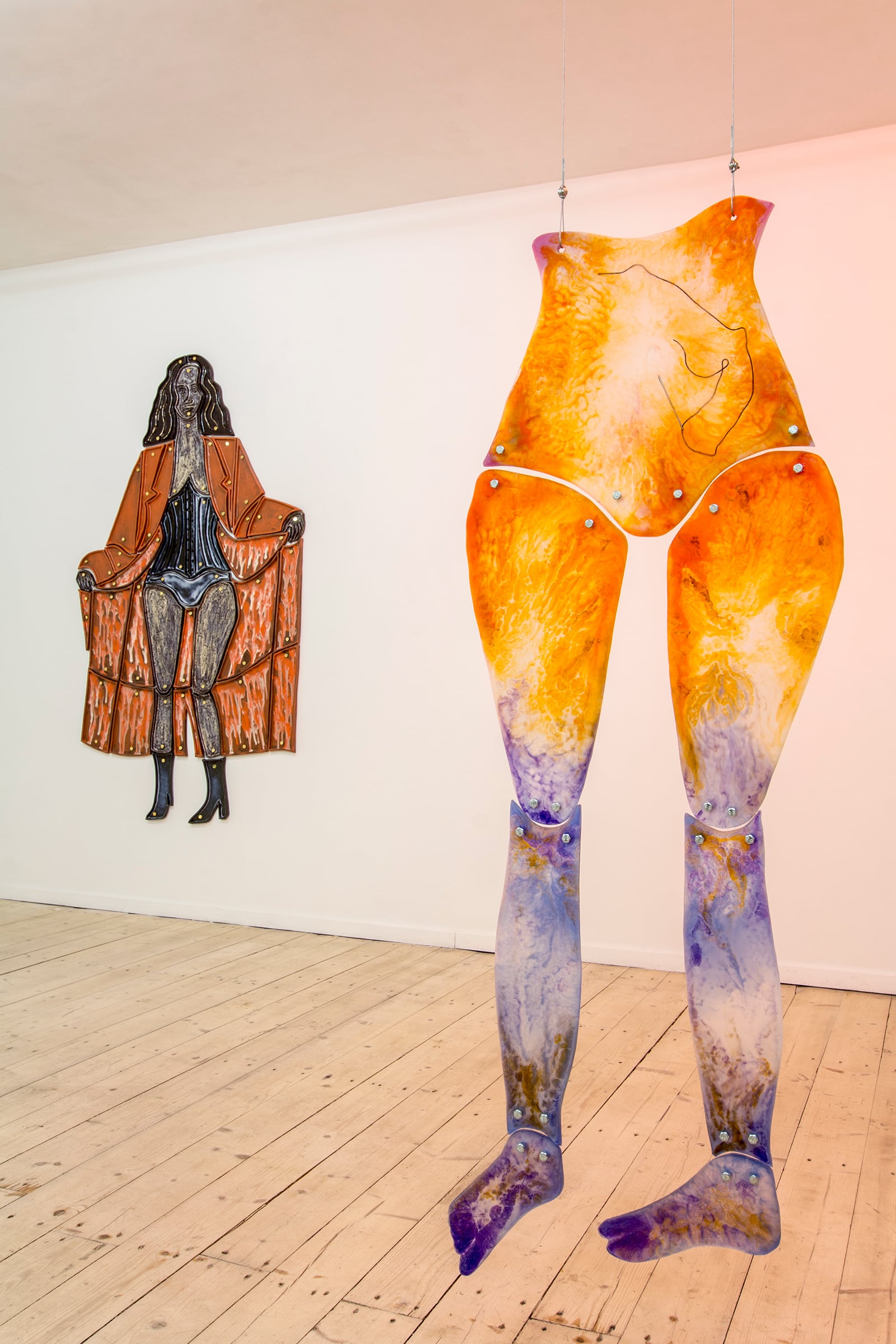 Exhibition view
Exhibition view
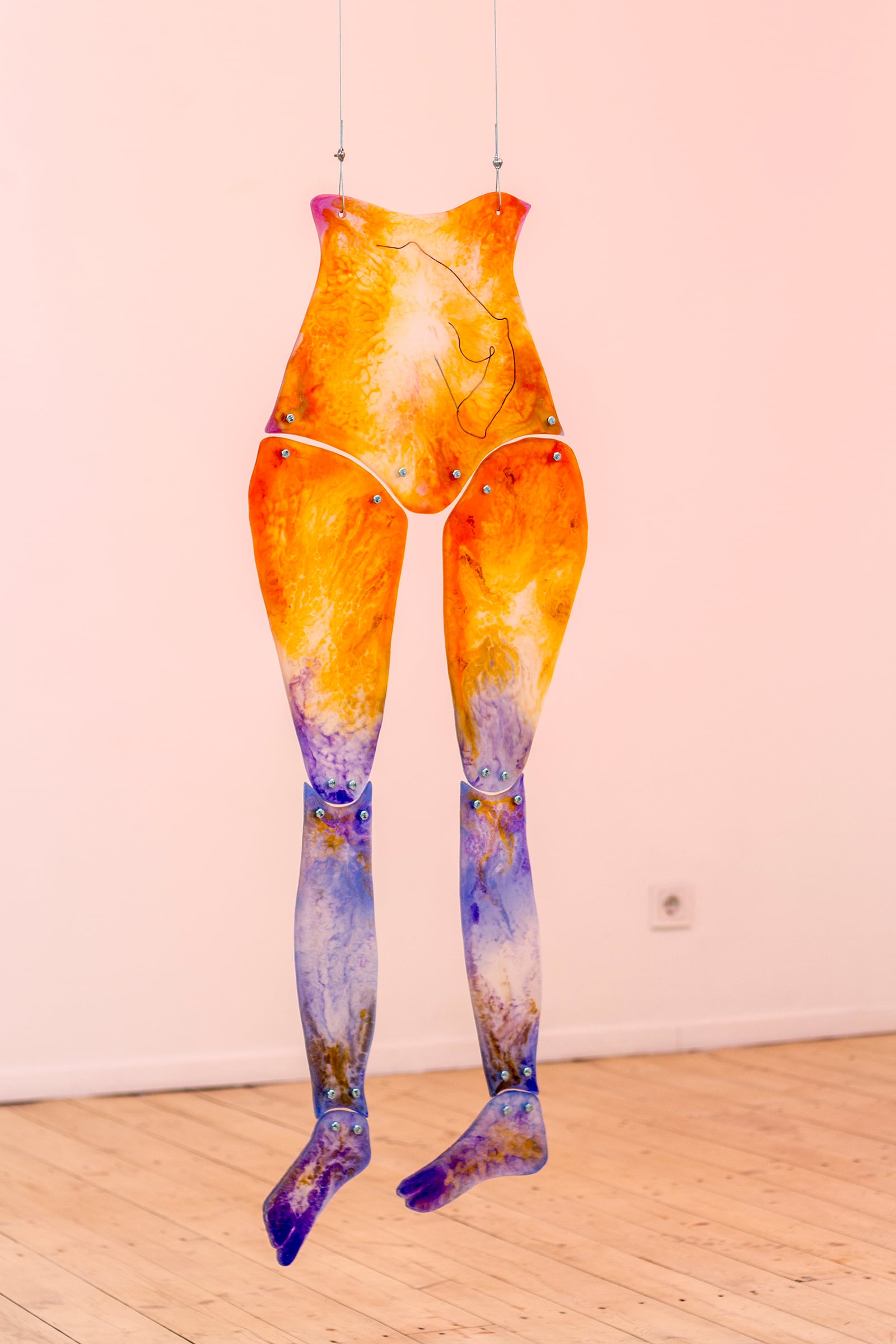 Paloma Proudfoot, Hiding to make room. Resin, needle, thread, Perspex, bolts, 2020
Paloma Proudfoot, Hiding to make room. Resin, needle, thread, Perspex, bolts, 2020
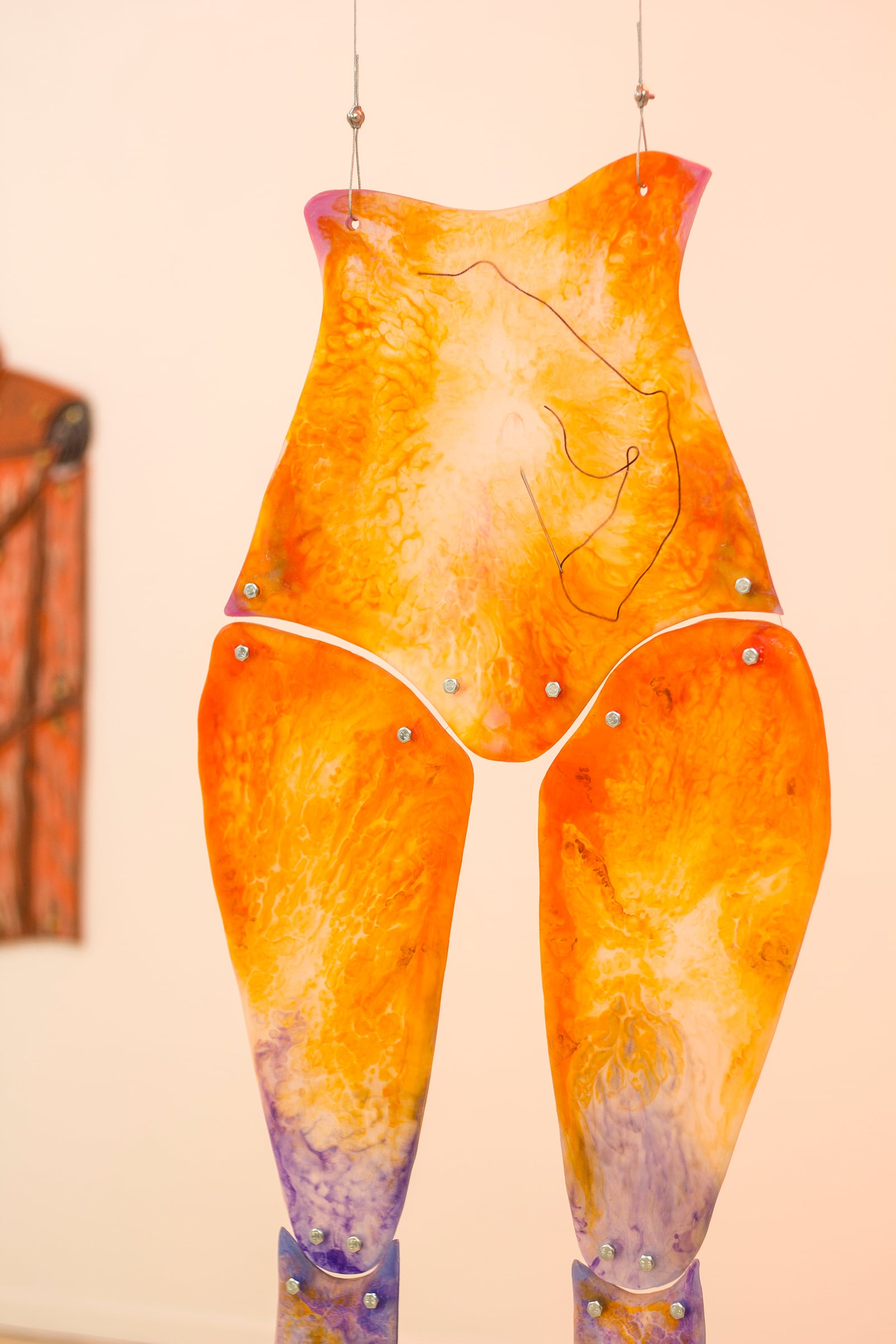 Paloma Proudfoot, Hiding to make room. Resin, needle, thread, Perspex, bolts, 2020
Paloma Proudfoot, Hiding to make room. Resin, needle, thread, Perspex, bolts, 2020
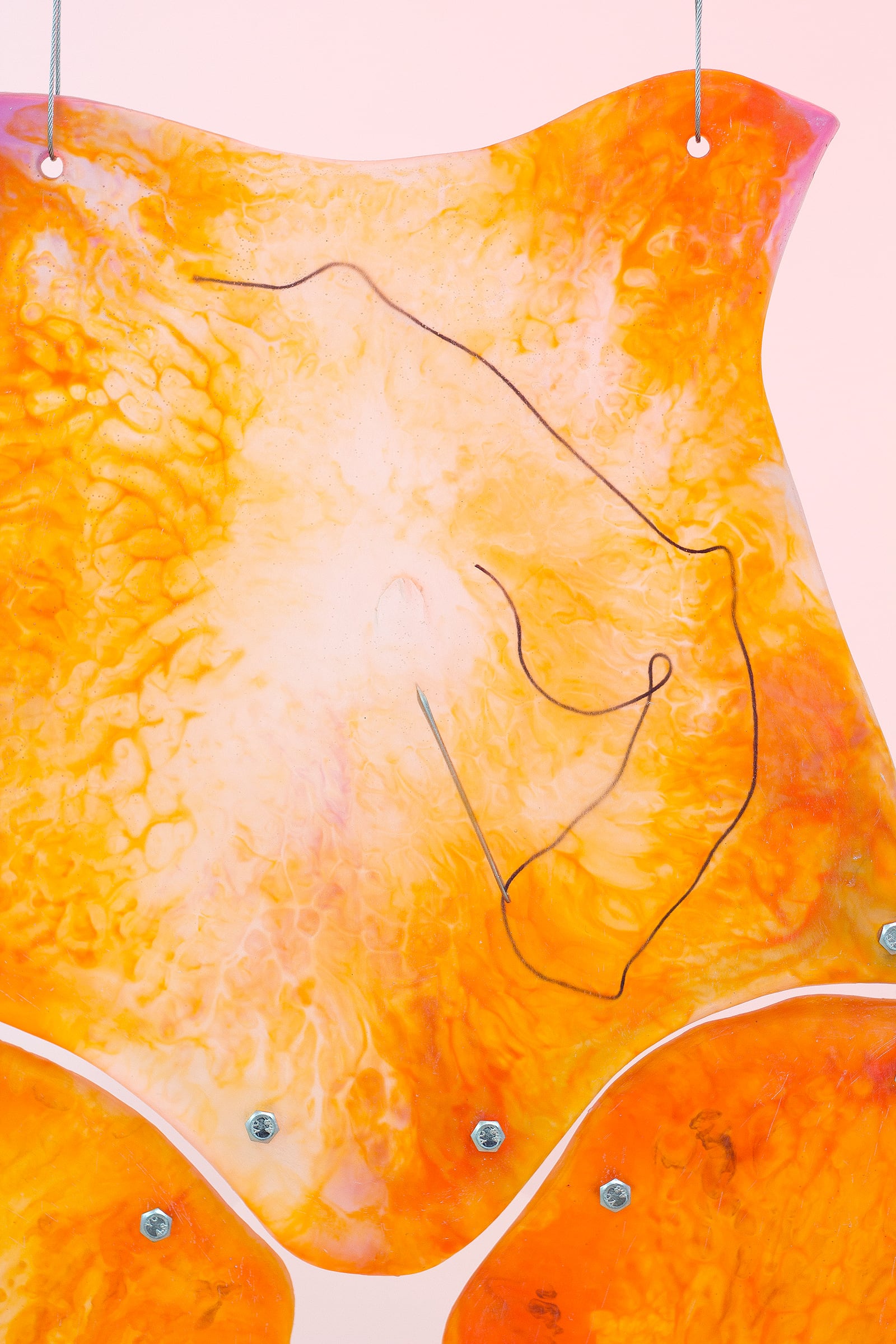 Paloma Proudfoot, Hiding to make room. Resin, needle, thread, Perspex, bolts, 2020
Paloma Proudfoot, Hiding to make room. Resin, needle, thread, Perspex, bolts, 2020
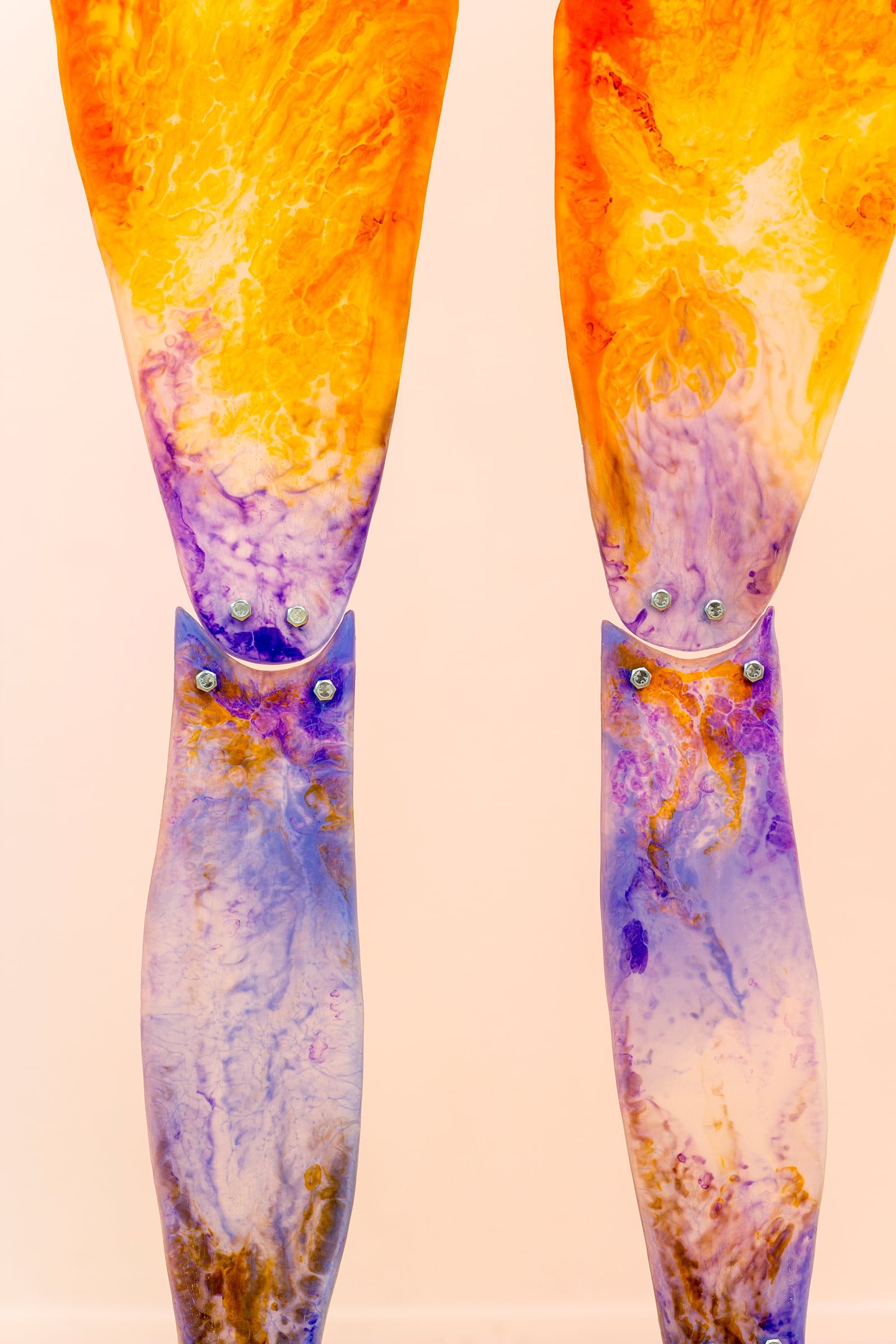 Paloma Proudfoot, Hiding to make room. Resin, needle, thread, Perspex, bolts, 2020
Paloma Proudfoot, Hiding to make room. Resin, needle, thread, Perspex, bolts, 2020
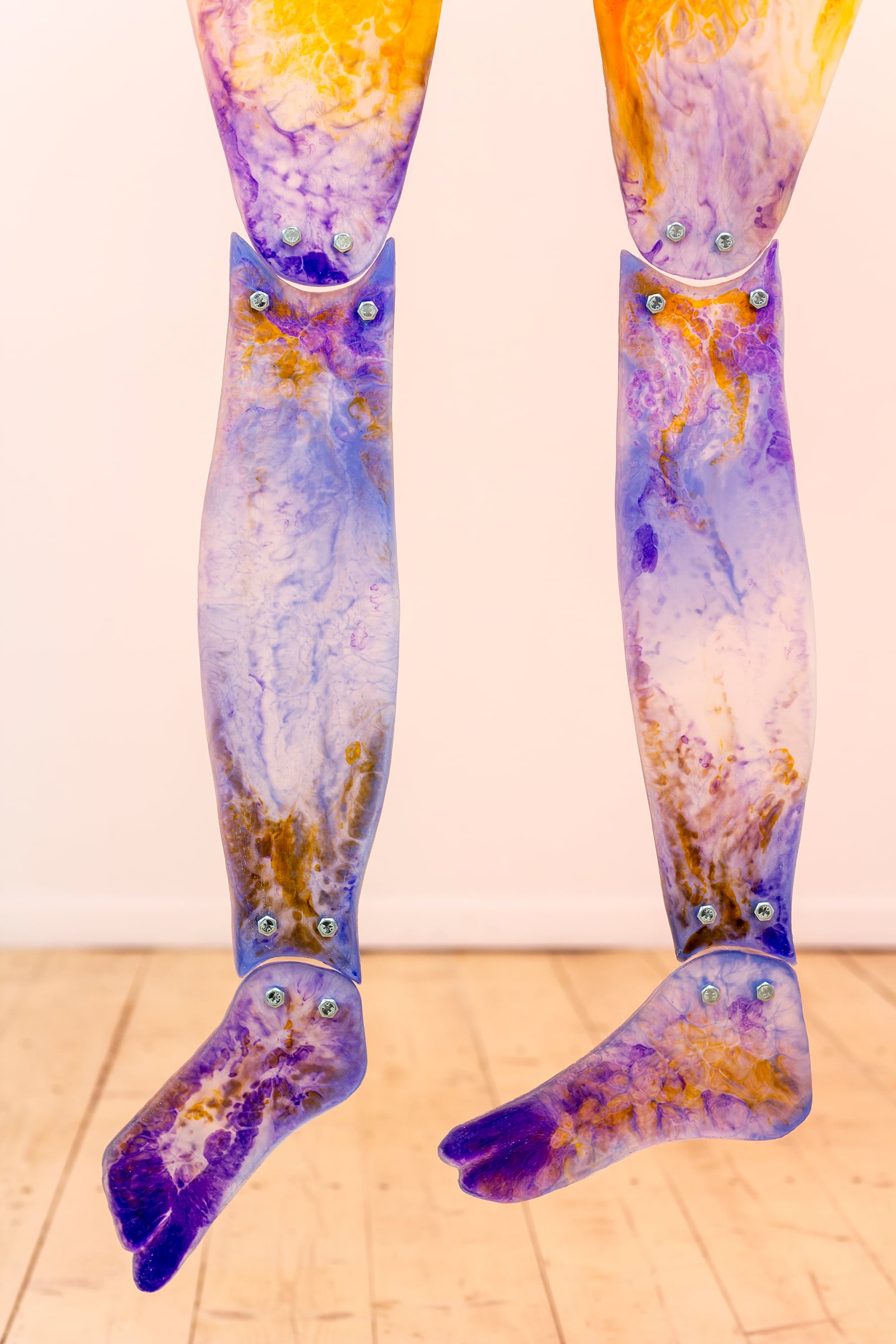 Paloma Proudfoot, Hiding to make room. Resin, needle, thread, Perspex, bolts, 2020
Paloma Proudfoot, Hiding to make room. Resin, needle, thread, Perspex, bolts, 2020
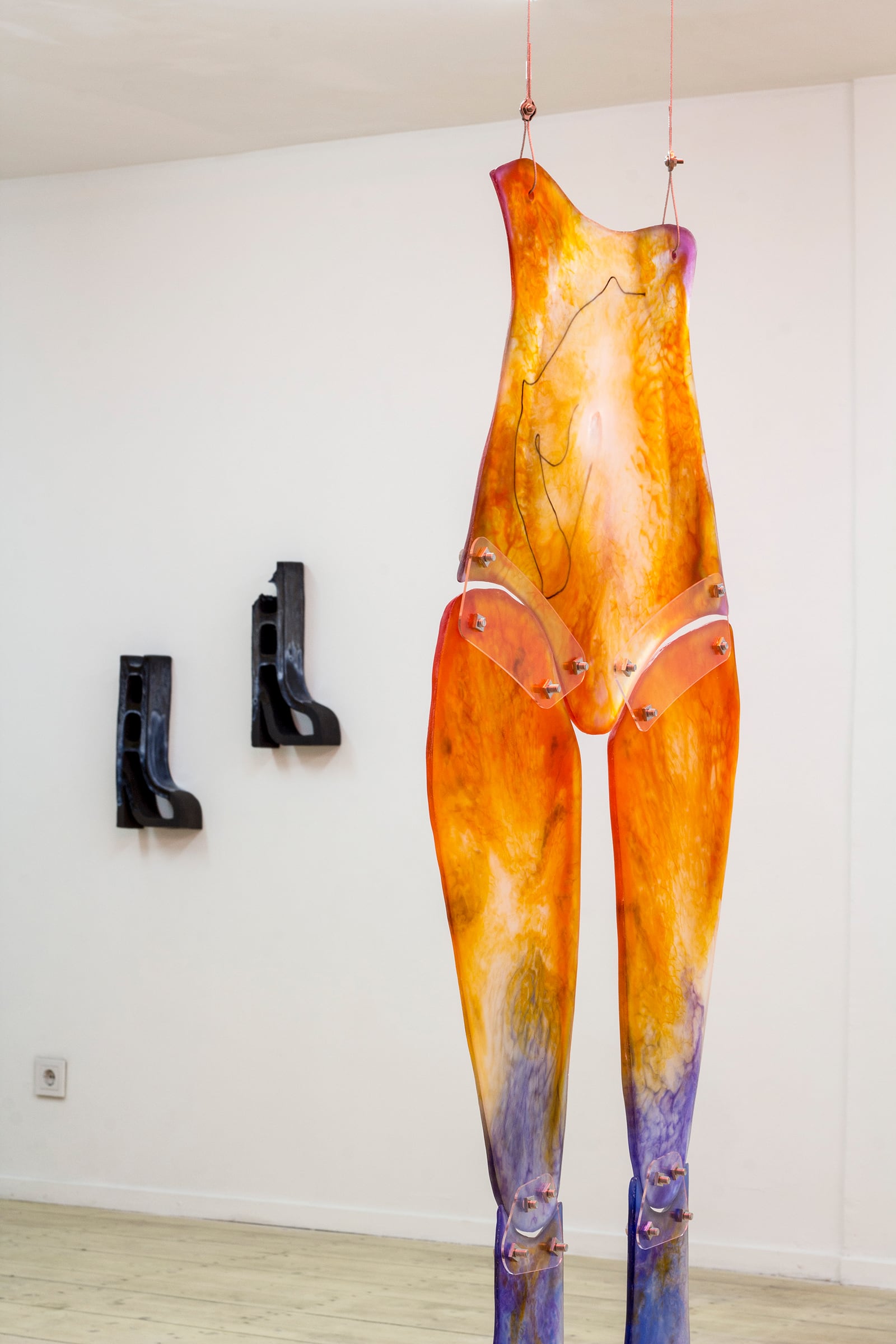 Exhibition view
Exhibition view
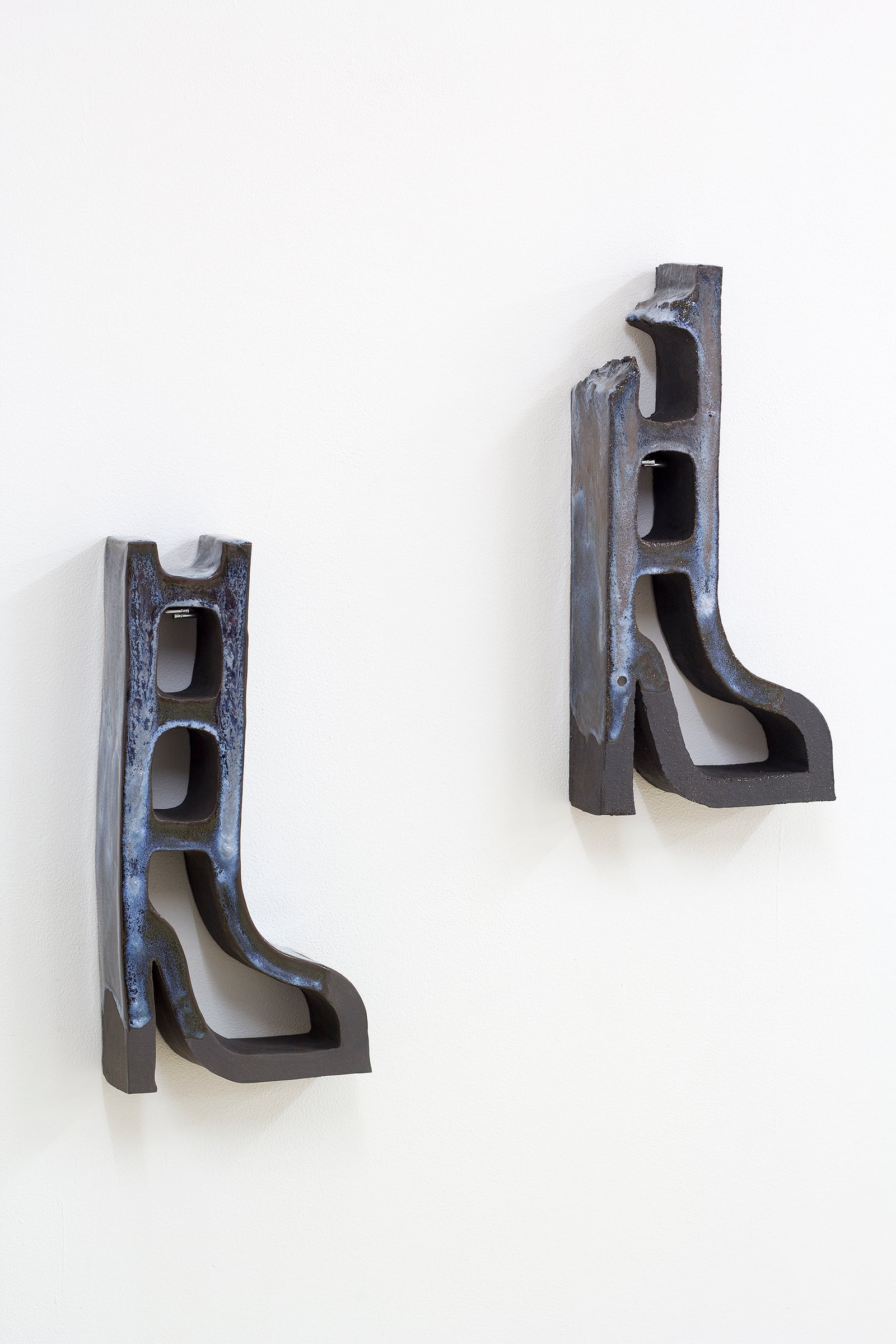 Paloma Proudfoot, Breeze boots I, II. Glazed black stoneware, 2020
Paloma Proudfoot, Breeze boots I, II. Glazed black stoneware, 2020
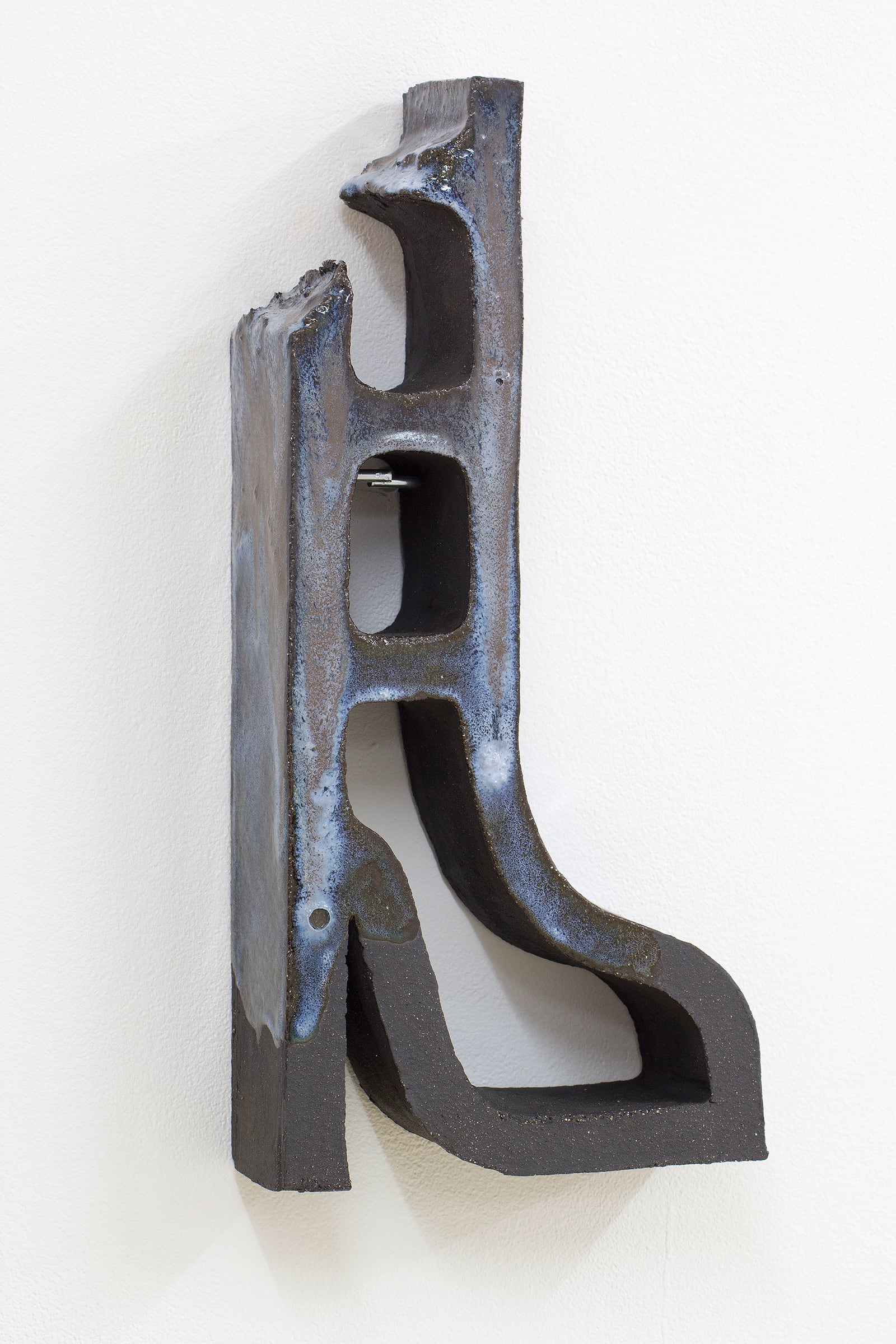 Paloma Proudfoot, Breeze boots I, II. Glazed black stoneware, 2020
Paloma Proudfoot, Breeze boots I, II. Glazed black stoneware, 2020
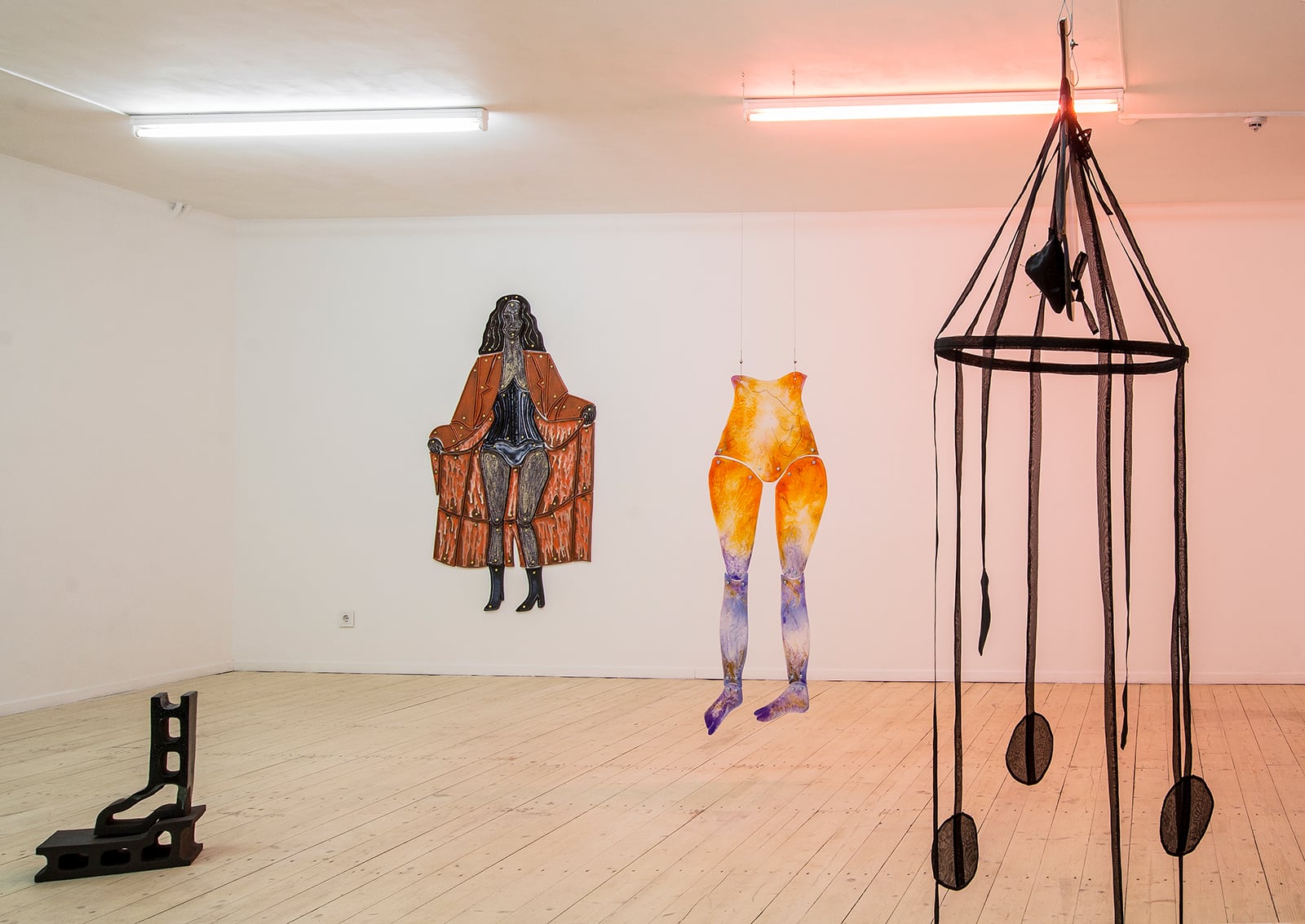 Paloma Proudfoot, Project for an Overcoat. Exhibition view at Editorial, Vilnius, 2021
Paloma Proudfoot, Project for an Overcoat. Exhibition view at Editorial, Vilnius, 2021
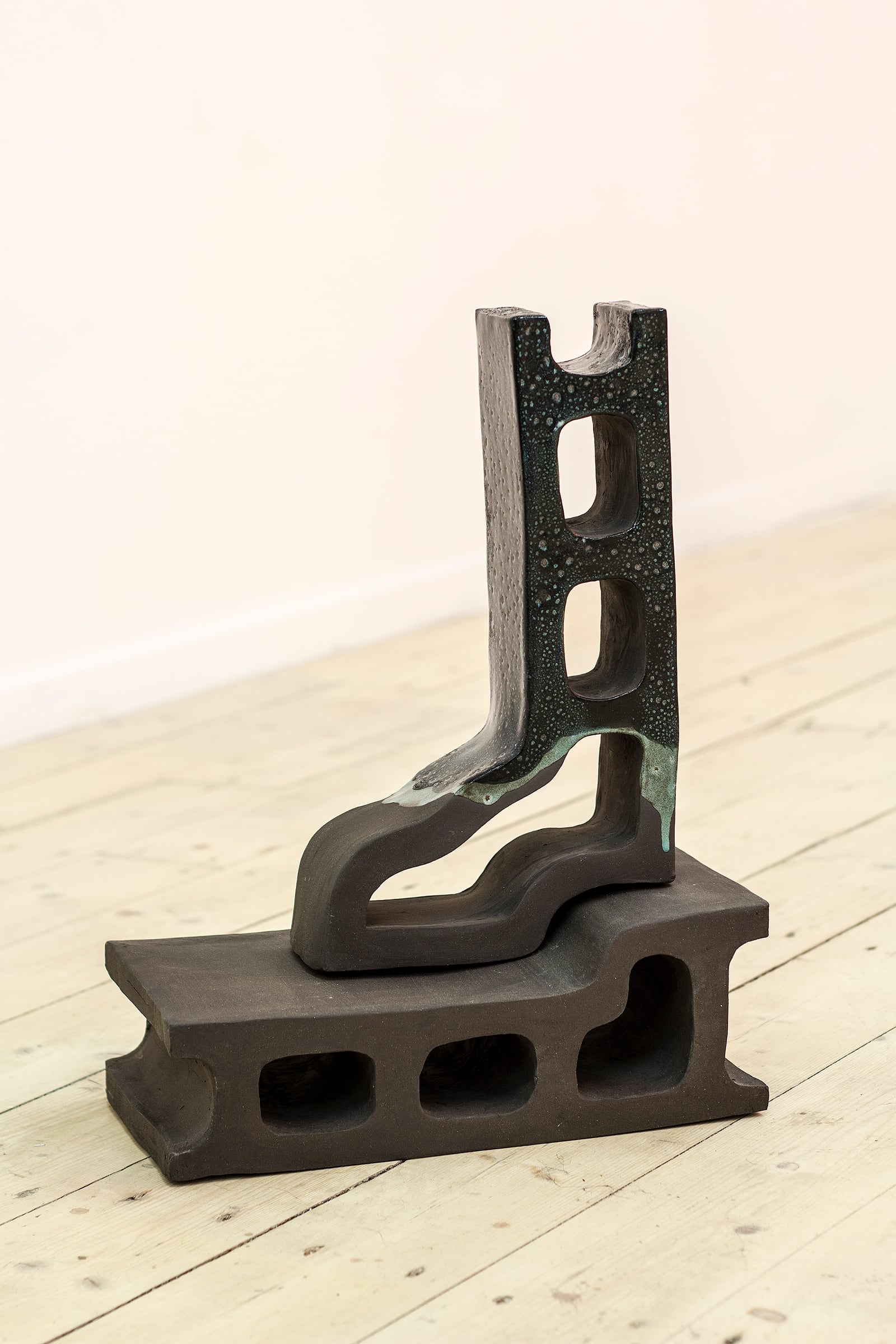 Paloma Proudfoot, Breeze boots IV. Glazed black stoneware, 2020
Paloma Proudfoot, Breeze boots IV. Glazed black stoneware, 2020
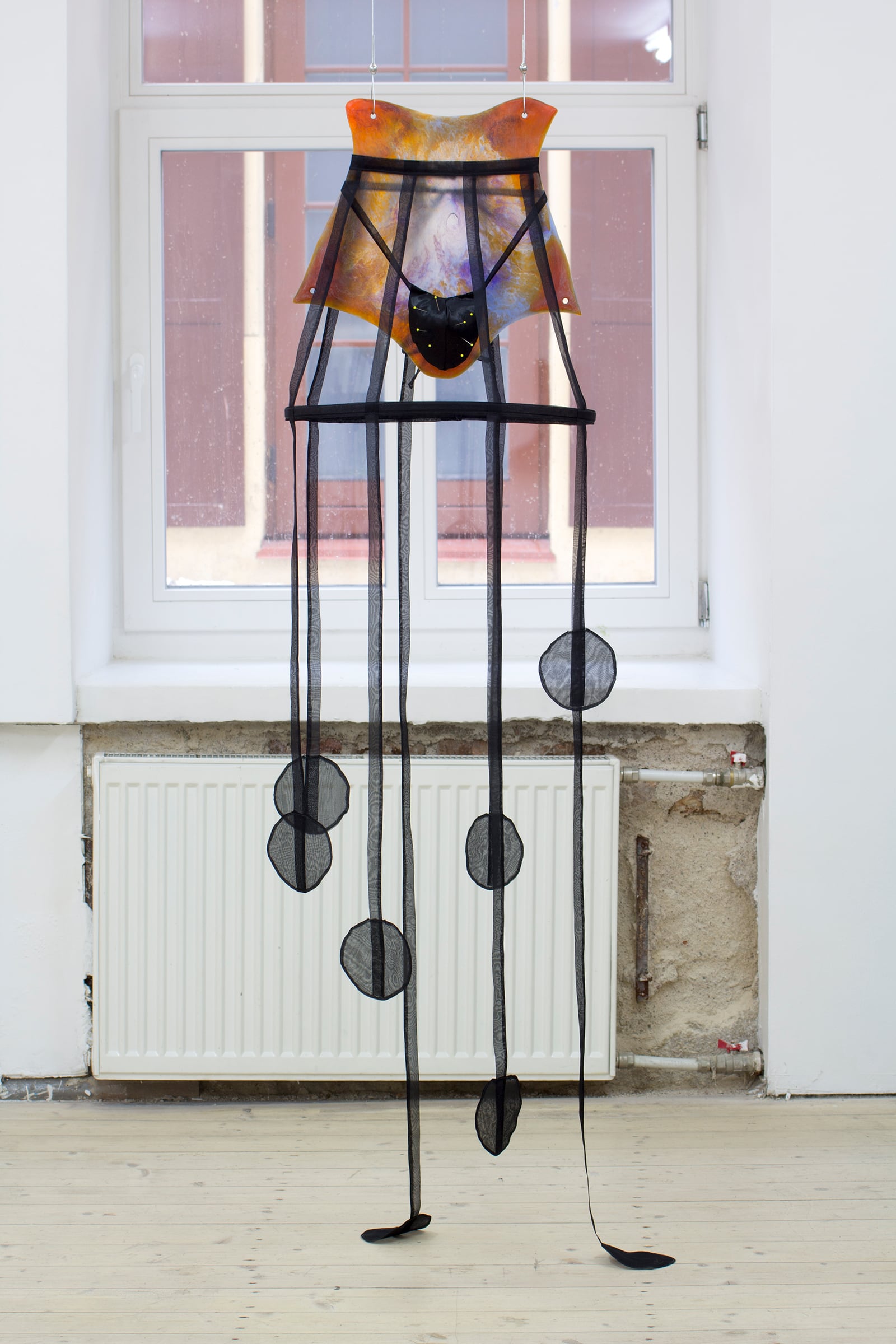 Paloma Proudfoot, Codpiece. Resin, fabric, wadding, glass head pins, boning, hook and eye fastenings, 2020
Paloma Proudfoot, Codpiece. Resin, fabric, wadding, glass head pins, boning, hook and eye fastenings, 2020
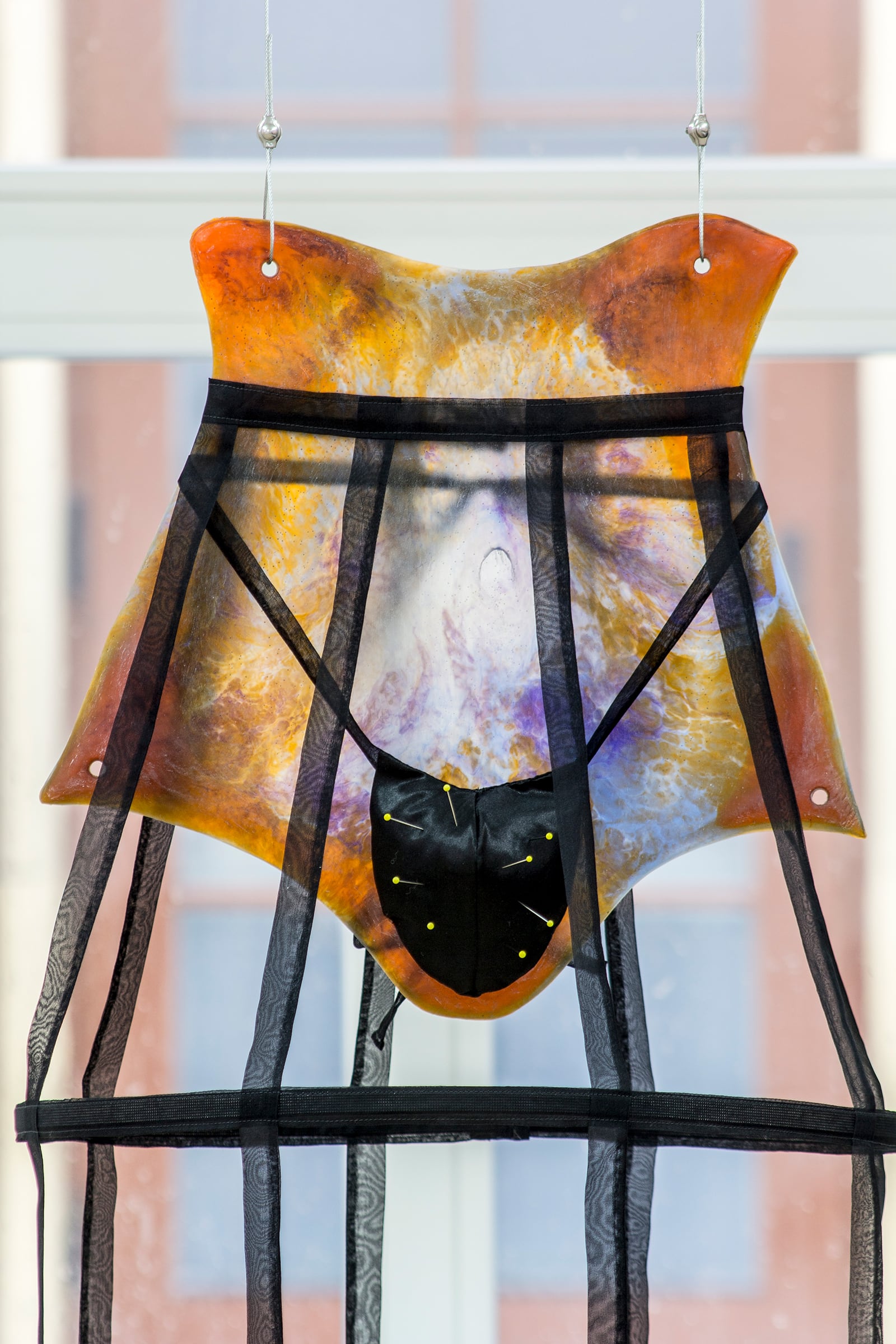 Paloma Proudfoot, Codpiece. Resin, fabric, wadding, glass head pins, boning, hook and eye fastenings, 2020
Paloma Proudfoot, Codpiece. Resin, fabric, wadding, glass head pins, boning, hook and eye fastenings, 2020
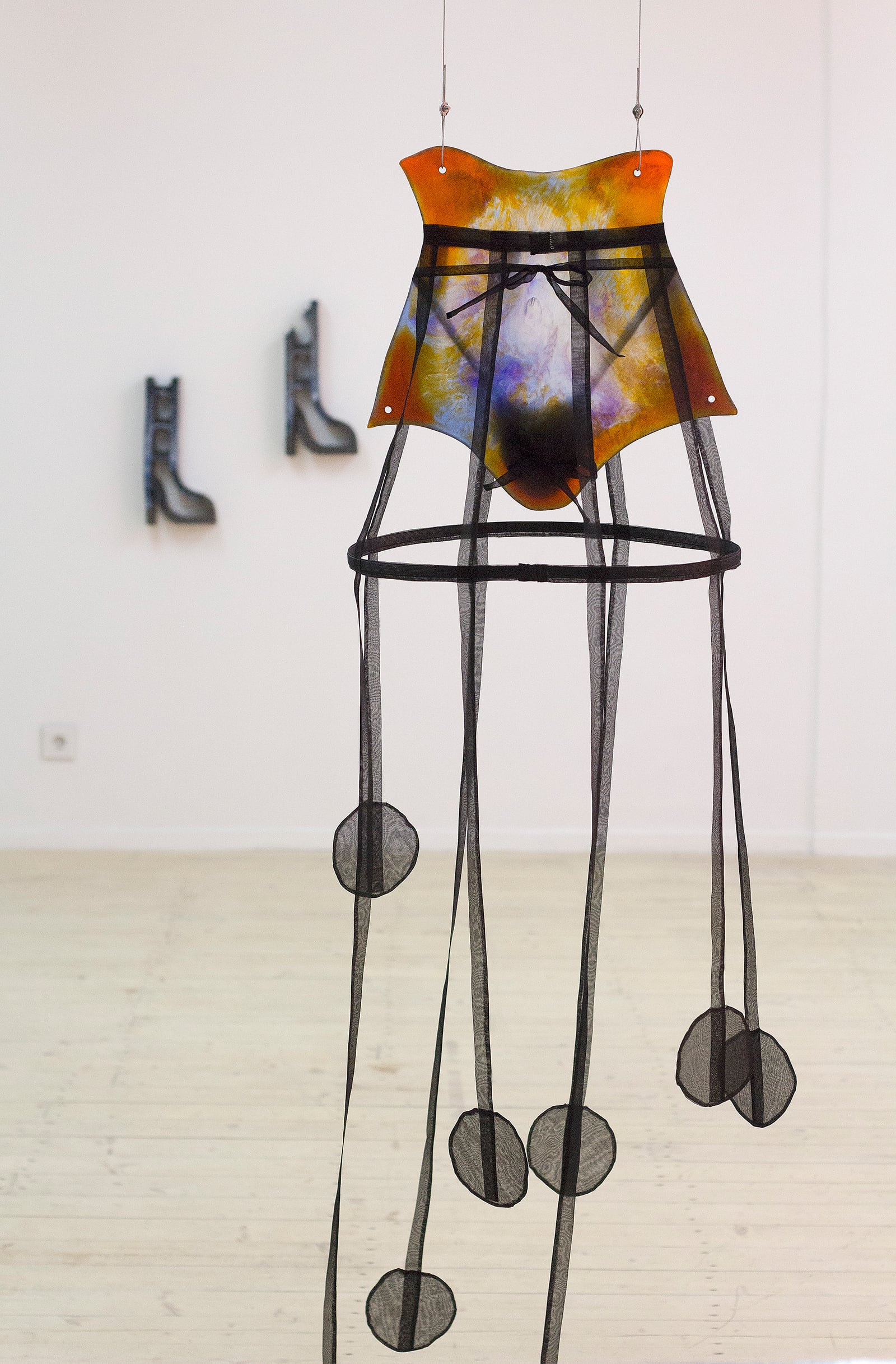 Paloma Proudfoot, Codpiece. Resin, fabric, wadding, glass head pins, boning, hook and eye fastenings, 2020
Paloma Proudfoot, Codpiece. Resin, fabric, wadding, glass head pins, boning, hook and eye fastenings, 2020
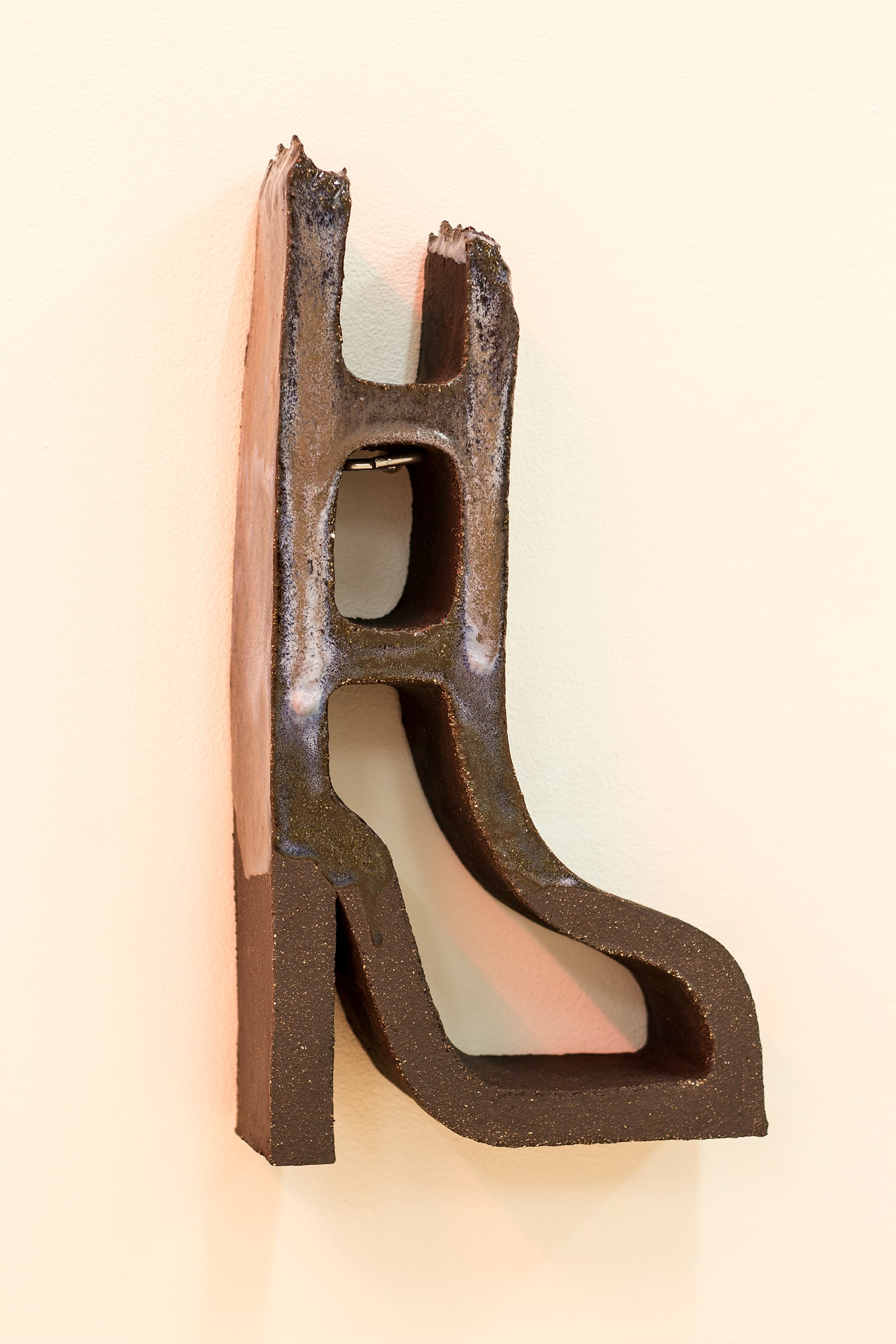 Paloma Proudfoot, Breeze boots III. Glazed black stoneware, 2020
Paloma Proudfoot, Breeze boots III. Glazed black stoneware, 2020
Notes on dressing / Project for an Overcoat
1. Dressing is a process that marks a beginning, a readying of oneself. Or perhaps more accurately it is a renewal: changing out of and into something different to demarcate a shift in time or duty.
2. Dressing is a ritual of preparation, of putting straight – dressing a wound in a bandage, dressing a salad with oil for easier swallowing.
3. Dressing my dad in hospital, remembering how he admired his standard issue gown, marvelling at the detail spent on a garment only ever destined for single use: I thought of how all patients, with their individual histories and ailments, become one body in this uniform, a body generalised in their need for care.
4. Clothes can be a balm, covering wounds literal and metaphorical, simultaneously smoothing the eye to edges and repelling intrusion. The dressed body presents a unified whole and creates an illusion of safety around the body; one in which we feel and perceive others to be contained, discrete entities. Clothes define us as individuals but also form a kind of connective tissue, signing our allegiances to others.
5. Clothes can be bondage, felt to be a punitive chore that falsely expresses individuality, completely disassociated from how the wearer might truly feel. This is perhaps why clothes still suffer from a reputation of being a superficial concern but could also be their most powerful attribute. The lie as shield: carapace to the unstable centre and protection against deeper judgement.
6. In the 1920s Russian Constructivists tried to design a uniform clothing fit for all to espouse the Communist values of the nascent Soviet Union. They aimed to reject fashion and all its bourgeois individualistic associations and embrace social cohesion through uniform. The designs, most of which were never realised, seem to function as diagrams for an alternative school of clothes making. With limbs sectioned off and flattened, not cut but constructed, a collage of different material planes rather than the hidden seams of neat tailoring. The flattened shapes put bare limb and coat as if as one, like X-ray scans melding cloth and skin. These designs proposed a utopian vision of a world without fashion, an egalitarian society without difference, but no consensus on a single type of dress could be found and the designs ended up creating a fashion in and of itself.
7. Codpieces, the padded prosthesis to exaggerate the crotch of the Tudor English man, were used as pin cushions by tailors while gussying their client into their layers of velveteen glory that framed their newly upholstered dicks. These men of great standing looked to mark themselves apart: richer, more powerful, better endowed than the next, but now we can see how they all conformed to look exactly the same.
8. To be unable to get dressed marks one as an outsider. Those that are too physically or mentally unwell, or homeless without a change of clothes and shelter, are shunned from a capitalist society, whose entry system is the ability to show up ‘presentable’ and ready for work. If I choose not to get dressed, I have been brought up to see that as being lazy, somehow renegade, potentially dangerous even, when I know that it is actually completely harmless. I think of Jo Spence’s diaries recounting her experience of breast cancer and the entry that read, ‘How do I give up responsibility without being ill?’ emblazoned in black marker pen.
9. As my dad’s illness progressed, I might have imagined that dressing would have steadily decreased in importance. Sartorial concerns seemed rightly insignificant in the shadow of his imminent death. But in watching the ever slower and exaggerated process of my dad being bathed and delicately changed into fresh pyjamas by my mum, the process of dressing became an almost holy ritual. Confined by his illness to his bedroom, dressing was entirely devoid of concern of how he would be seen by the outside world. I saw dressing at its purest: a process created to provide comfort and convey love. Dressing did not mark the start of his day but formed almost the entire purpose of it. It represented his desire to live, and he dressed, or at least was dressed, until he really could no longer.
— Paloma Proudfoot